Prosperity City
Creating a game for social change.
Purpose
This passion project served as the centerpiece of my senior capstone and my submission for The Corcoran School of Art & Design’s NEXT exhibition.
Duration
Sept ’24 – Apr ’25
My roles
Game design
Programming
User research
UX/UI design

The problem
Despite the promise of the American Dream, systemic barriers, random chance, and inequities often make success unattainable for many. This disconnect can diminish empathy and reinforce an individualistic mindset, limiting community solidarity.
The Solution
To challenge this perspective, I created a game that encourages players to step into different life experiences. Through gameplay, it highlights the role of systemic obstacles while emphasizing the power of collective action, mutual aid, and community support in overcoming challenges.
My approach
I drew inspiration from the Black Panther Party’s Survival Programs, one of the most successful mutual aid programs in the US. By studying successful community-driven support, I identified tasks that could be integrated in game.
How might we foster empathy for those unable to achieve the American Dream and encourage people to build community in the process?
Research
I needed to find if Americans still subscribe to the concept of the American Dream. In this context, I define the American Dream as the promise of equal opportunity and attainable prosperity through hard work in the United States.
To ground the project in real perspectives, I ran two surveys:
• One explored how Americans feel about the idea of the American Dream
• The other looked at gaming habits to guide design choices.
18 people responded to the first survey, sharing their views on the American Dream, their behaviors pertaining to community action, and their experiences in their occupations.

I facilitated 5 semi-structured interviews in person and collected 27 survey responses online to discover more about users’ gaming habits.

“The discrepancy between rich and poor in the US makes it very hard to climb. Add the fact that people can be hampered by things totally out of their control, like disease, for which they are financially penalized to a much higher degree in the US than in many other places.”
-Participant 13, American Dream Survey
Refining the Concept
Survey results revealed skepticism around the American Dream. Many participants doubted its attainability and felt unsure how to challenge such a deeply rooted issue. Rather than just highlighting the problem, I aimed to create a game that implicitly critiques the system and gives players tangible ways to take action.
I did audits on products that served similar purposes to find what aspects I could take inspiration from while also finding how I could set myself apart from what already exists.
Disparity Trap
- Goal: “…provides an easy way to have hard conversations around race and privilege in America”
- Explores how privilege works in systematic and non-systematic ways
- To win the game, reach basic life goals like earning a job, home, and business
- Each player’s gameplay is different; their identities are based on dice rolls
- Can work cooperatively with other players
American Dream Game
- Goal: Make people explore how bias and systematic inequality are an obstacle to reaching the American Dream
- To win the game, reach the end of the board
Players’ gameplay is different based on what spaces they land on the board. - The game can be played digitally, as a tabletop board game, or on a life-sized board where players walk on the board.
- Can be used for training in corporate settings


Development plan
The idea for Prosperity City was finalized! To define the events and goals of the game narrative, I outlined the character journey.

I also created a timeline for the rest of the work to ensure I had enough time to finalize the project in time for the deadline.

Mockups
To brainstorm the visual style of the game, I used AI to generate initial mockups for 2D and 3D options which helped me quickly explore different design possibilities. This allowed me to refine the aesthetic direction and ensure it aligned with the game’s themes.

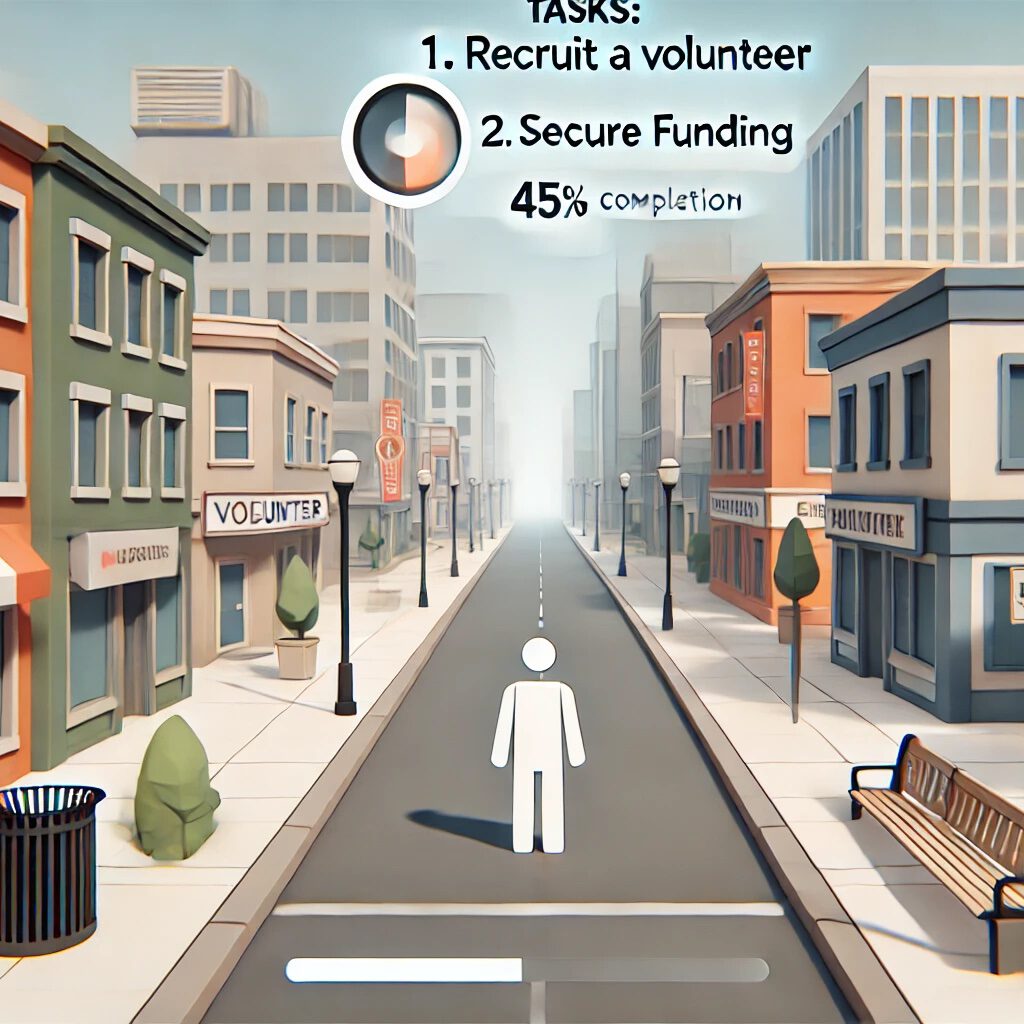
I decided to take inspiration from game models like Stardew Valley and create a 2D, top-down pixel game.

User Testing
With the first prototype, I had potential users test the game to find what changes could be implemented to make the game more user-friendly.
I found that users:
- Were confused which objects and NPCs were interactable
- Had a hard time navigating the map because of its size
- Didn’t know where to go to complete tasks
- Felt that the game could benefit from more choice options during dialogue
- Felt that the dialogue options were too easily identifiable as “good” or “bad”

Final Prototype
Keeping user feedback in mind, I added a minimap that is expandable, a quest pointer, and additional options during dialogue.

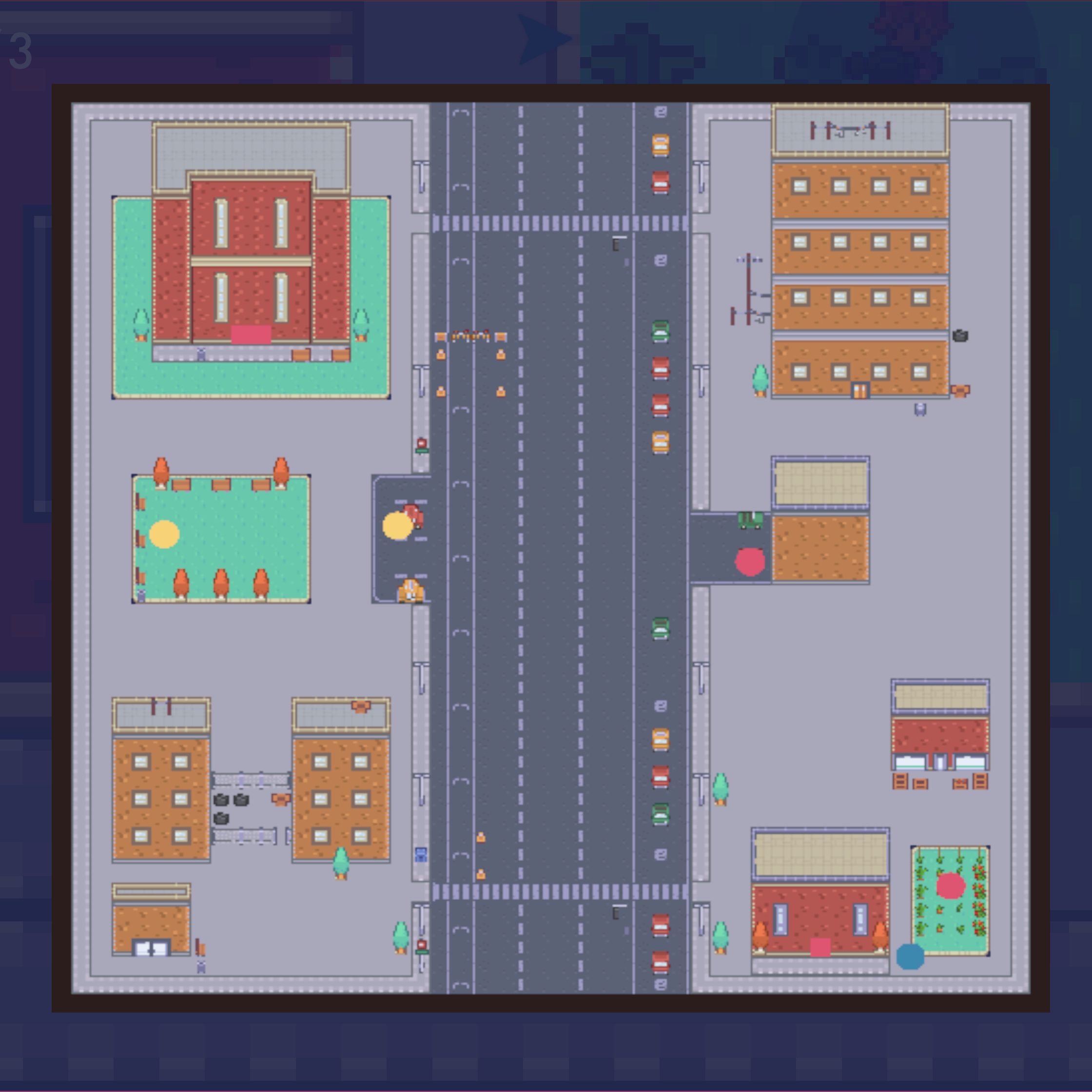
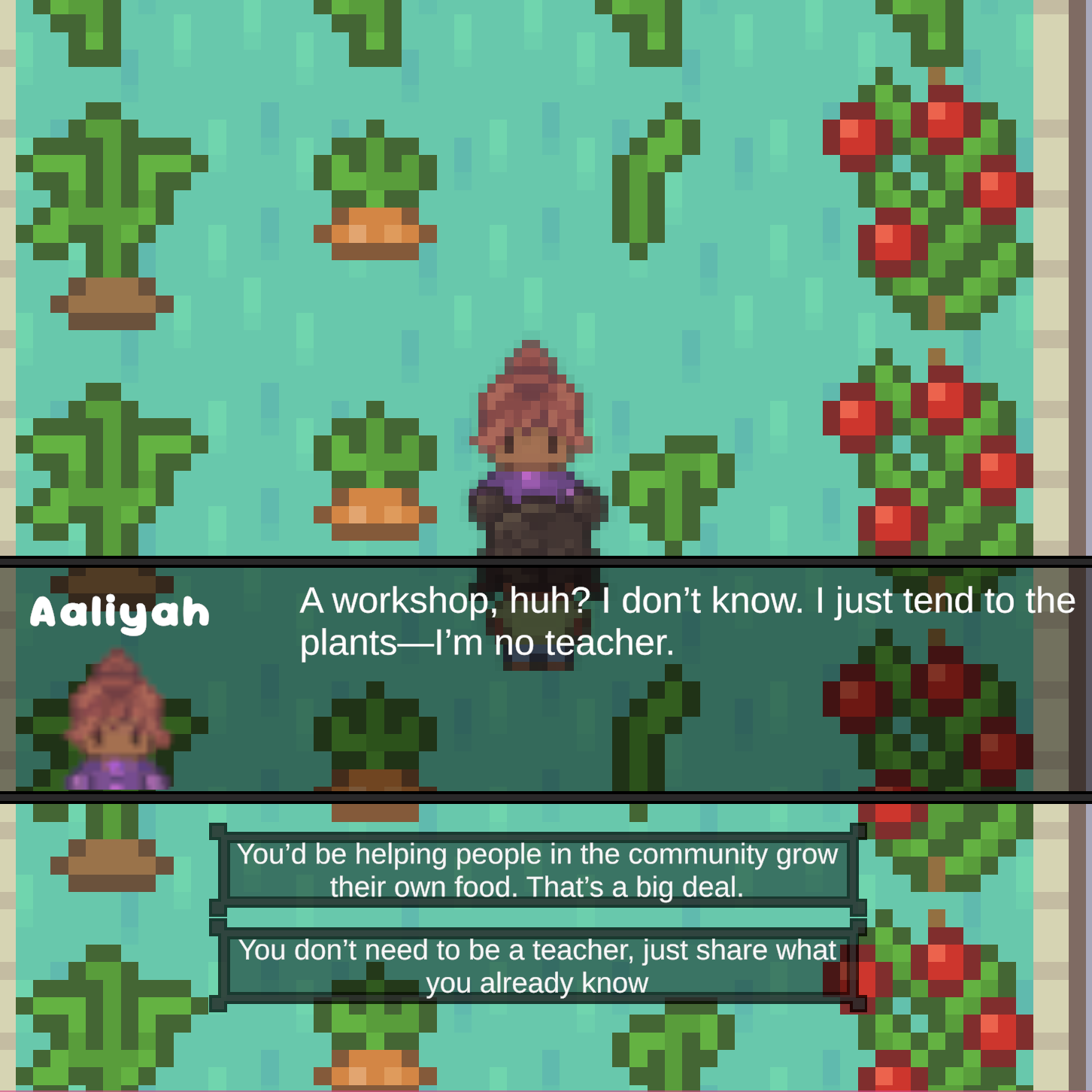
I also created materials for the exhibition that gave users background information on the game’s historic inspiration and control directions.

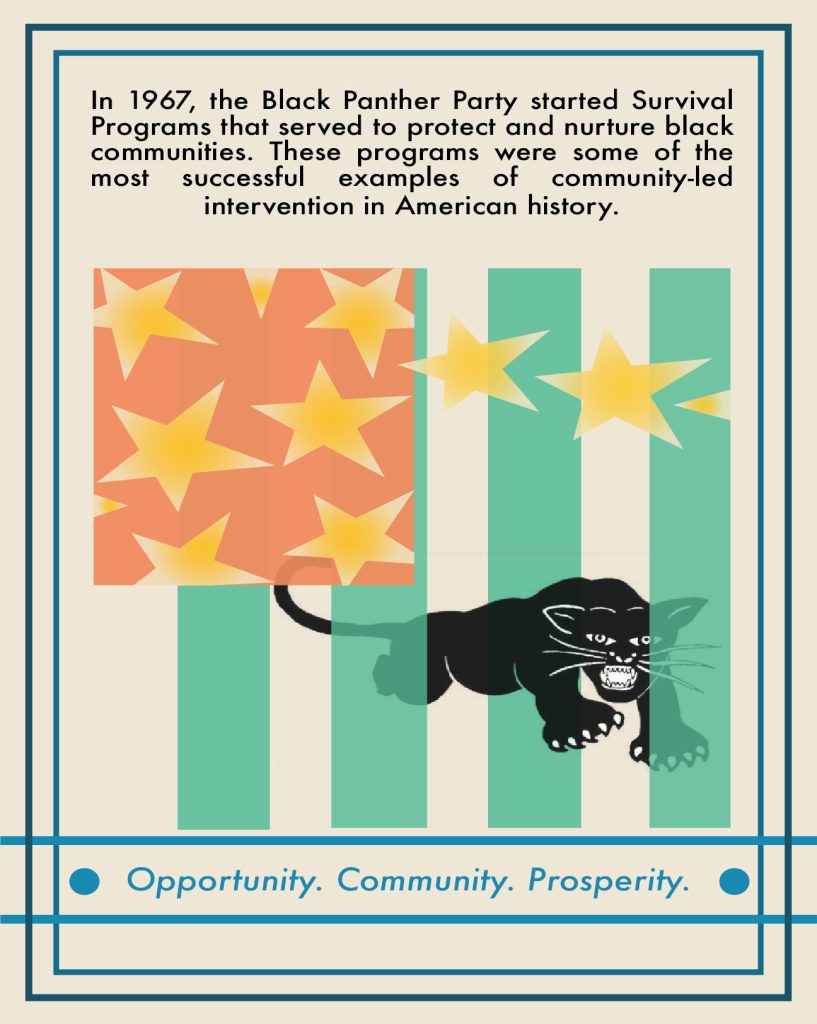
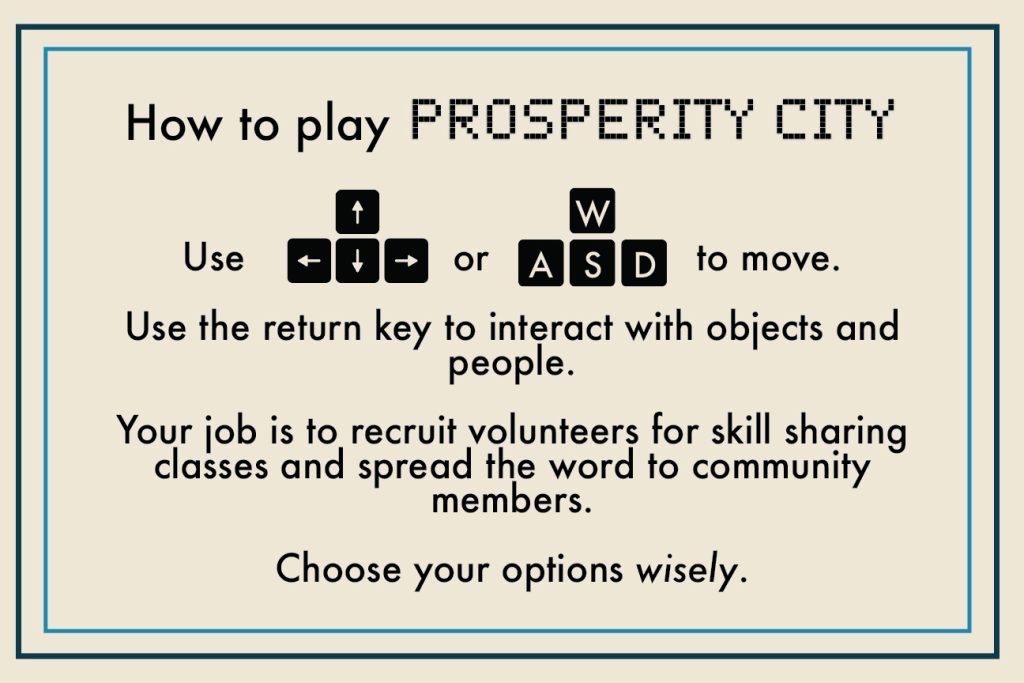
Test out Prosperity City for yourself! Play fullscreen to avoid clipping.
Image of exhibition